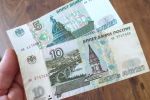07.02.2023, 10:33
There is more imported beer in Russia
Source: OREANDA-NEWS
OREANDA-NEWS As NielsenIQ analysts found out, there is more imported beer in Russia — the average number of foreign-made beverage items in the assortment of retail chains in October-December 2022 increased from 18 to 22. So the market is gradually recovering after a sharp decline from January to September, when the indicator decreased from 35 to 18 positions. The research data is cited by Kommersant.
At the same time, the representation of global brands of beer produced at Russian factories under licenses decreased slightly — from more than 54 to 52.5 positions. The average number of local brand items in stores has grown from 78 to 80. In general, by the end of 2022, the following alignment of forces was observed in the market: domestic brands occupied 48.1 percent of the assortment, licensed — 33.4 percent, imported — 16.6 percent.
The interlocutor of the publication in the beer market said that Russian companies managed to increase imports by establishing ties with new partners and banks, as well as solve a number of logistical problems. In addition, some chains have begun to expand their portfolio, in particular, due to beer from China.
However, the cost of imported beverages is growing, so the demand for it is decreasing, says Igor Havsky, co-owner of the SWAM Group distributor. In his opinion, the gap with the price of Russian beer is likely to increase. NielsenIQ calculated that in December, foreign—made beer on average cost more than 200 rubles per liter, licensed beer cost more than 120 rubles per liter, and local brands cost less than 100 rubles per liter.
The founder of the chain of beer stores "I take a day off" Nikolay Zhelagin said that brands whose manufacturers stopped deliveries returned to sale, but they became 1.5 times more expensive. Earlier, market participants told the newspaper that companies from the UK, USA and Canada refused to sell in Russia, and some companies from the Czech Republic, Germany and Belgium continued to ship. According to Igor Khavsky, in 2022 beer imports to Russia fell by 30-35 percent in annual terms.
At the same time, the representation of global brands of beer produced at Russian factories under licenses decreased slightly — from more than 54 to 52.5 positions. The average number of local brand items in stores has grown from 78 to 80. In general, by the end of 2022, the following alignment of forces was observed in the market: domestic brands occupied 48.1 percent of the assortment, licensed — 33.4 percent, imported — 16.6 percent.
The interlocutor of the publication in the beer market said that Russian companies managed to increase imports by establishing ties with new partners and banks, as well as solve a number of logistical problems. In addition, some chains have begun to expand their portfolio, in particular, due to beer from China.
However, the cost of imported beverages is growing, so the demand for it is decreasing, says Igor Havsky, co-owner of the SWAM Group distributor. In his opinion, the gap with the price of Russian beer is likely to increase. NielsenIQ calculated that in December, foreign—made beer on average cost more than 200 rubles per liter, licensed beer cost more than 120 rubles per liter, and local brands cost less than 100 rubles per liter.
The founder of the chain of beer stores "I take a day off" Nikolay Zhelagin said that brands whose manufacturers stopped deliveries returned to sale, but they became 1.5 times more expensive. Earlier, market participants told the newspaper that companies from the UK, USA and Canada refused to sell in Russia, and some companies from the Czech Republic, Germany and Belgium continued to ship. According to Igor Khavsky, in 2022 beer imports to Russia fell by 30-35 percent in annual terms.




Комментарии